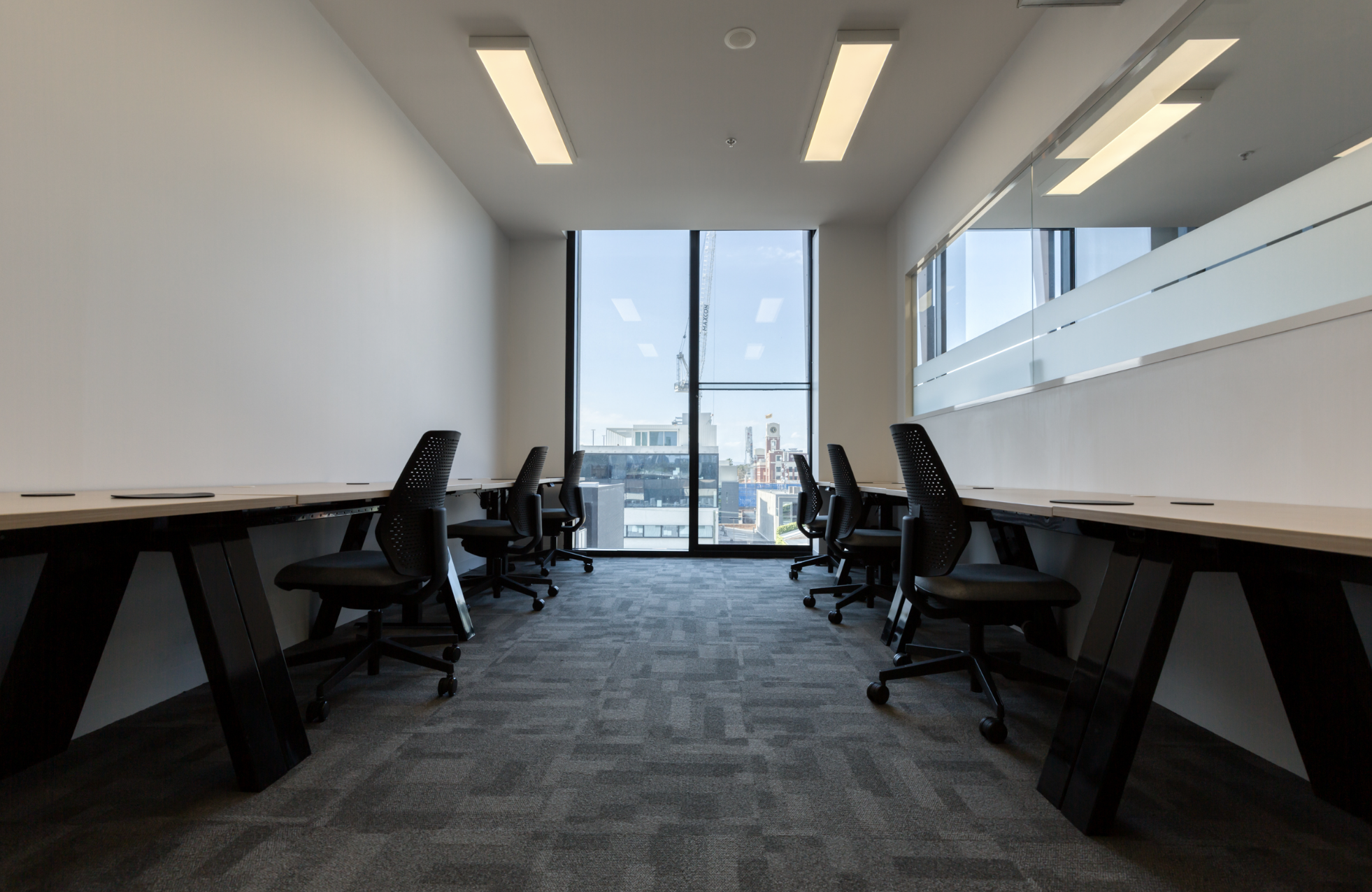Barry Hickman, Director of collective_100 (premium coworking Cremorne) and previous landlord of commercial property in Cremorne, explained to us why there's so much purpose behind coworking, and the equations involved.
We sat down to talk numbers.
The coworking industry has grown from $22 billion in 2024 to an expected $82 billion by 2034 – nearly quadrupling in a decade. That kind of explosive growth doesn't happen by accident.
The real cost of a traditional office lease
Barry was the landlord of a 15-person commercial lease on Cubitt Street, Cremorne.
Most businesses compare office spaces by looking at the rent per square meter and calling it a day. But that base rent? It's just the tip of the iceberg.
Barry's traditional lease started at $600 per square meter, which for his 210 sqm spacemeant $126,000 annually just in base rent. But that was only the beginning.
Here's what the annual costs looked like:
Rent: $126,000
Fitout (amortised): $60,000
Body Corporate Fees: $12,504
City of Yarra Rates: $3,364
City West Water: $2,064
Cleaning: $2,400
Electricity: $4,820
Insurance: $3,932
Internet Hosting: $3,600
Maintenance & Repairs: $2,009
Land Tax: $8,363
Milk: $1,131
Printer: $6,516
Interest on Fit out & Bond (per annum): $19,125
When Barry added everything up, his traditional office was costing $255,828 per year.
The same 15-person team at collective_100? $162,000 per year.
That's a 36% saving - nearly $94,000 back in the business annually.
That’s enough to hire another full-time employee, invest in large scale marketing, upgrade equipment, or build a cash buffer for the inevitable rainy day.
The hidden cost no one talks about
In his traditional office, every one of those costs we just listed was a separate invoice to review, a separate vendor to manage, a separate problem to solve.
Who do you call when the internet drops during a client presentation? Who schedules the cleaners? Who deals with the building manager when the heating breaks down in winter?
You either a) hire a facilities manager, or b) take it on as the CEO or founder yourself.
That administrative burden might not show up as a dollar figure but ask any business owner what their time is worth.
Hours spent managing office logistics are hours not spent on strategy, sales, product development, or literally anything else that moves the business forward.
In coworking, it's one monthly bill. Everything included. No facilities manager to hire, no receptionist to pay, no time wasted chasing vendors or reconciling a dozen different invoices each month.
You walk in and the lights are on, the heater has been on since 7am, the coffee machine has been cleaned and set up, and all you need to do is open your laptop.
Time is money, so keep this in the back of your head when doing your equations as well.
The flexibility factor
Barry's Cubitt Street lease locked him into a three-year commitment for exactly 210 square meters. But businesses rarely stay the same size for three years.
Should you win a major client and need space for five more people, you either need to find a way to squeeze them in, or you break a lease early and pay hefty penalties.
The reverse is the same – if you have a tough quarter and lose a few employees, you're still paying for their empty desks.
In coworking, terms start from month to month, meaning you can be agile in your payments and your business, and only pay for what you need.
For example,we had a company that started in a 4-person office, expanded to a 10-person office within six months, and then scaled back again.
No lease breaks, no penalties, no wasted money on empty space. They paid for exactly what they needed, exactly when they needed it.
Shared amenities: The economics of scale
The shared amenities in coworking spaces –kitchens, bathrooms, hallways, meeting rooms – means you and many other companies are all sharing the cost of these.
Therefore yes, the monthly price per square meter is usually more expensive at first glance, but when these costs are shared amongst you and many other companies, the savings show themselves per annum.
And that is the reason coworking has become such a large industry – because it just makes sense.
Is coworking right for your business?
The math speaks for itself, but coworking isn't just about saving money.
It's about removing friction, reducing risk, and giving yourself room to adapt as your business evolves.
If you're currently in a traditional lease and feeling locked in, or if you're a growing business trying to figure out your next move, the numbers are worth running.
Not every coworking space will deliver the same savings – it depends on your specific needs, team size, and location – but the pattern holds true: when you add up all the hidden costs of a traditional office, coworking almost always comes out ahead.
We've broken down every single cost in our detailed comparison calculator, so you can run the real numbers for your business.
Download our free "Traditional Lease vs Coworking: Cost Calculator" to see how much you could save– and how many hours you could get back to focus on what matters: building your business.




.svg)
